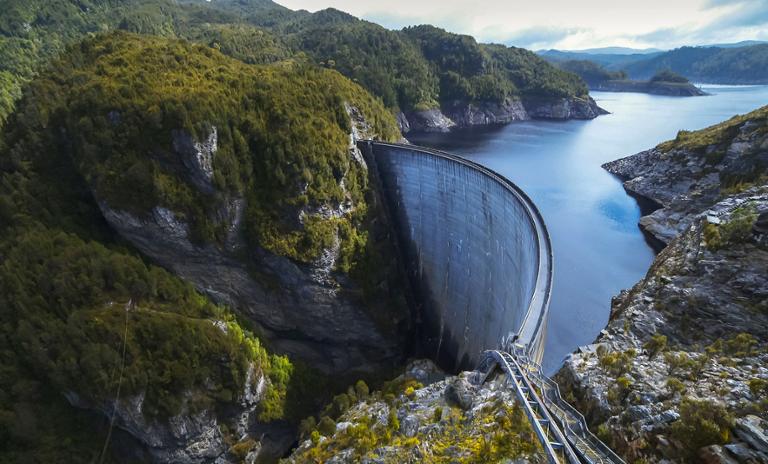COP
Read more about Roland Berger´s engagement at the Conference of the Parties (COP).


By David Frans, Yvonne Ruf and Daria Koroleva
Many of the clean technologies needed to achieve the 1.5 °C scenario are already technically available. However, scaling them up will require massive additional R&D investments. Learn how de-risking can support the process of getting cutting-edge technologies ready for market and making a significant impact on emissions reduction.
A large number of the technologies needed to achieve current decarbonization targets by 2030 are already technically available. For example, market-ready solutions, such as hydropower, electrolysis, heat pumps, wind and solar power are mature enough for commercial implementation. Others, such as natural gas linked to carbon capture and storage (CCS), direct air capture for CO2 and ammonia or methanol fueled ships are still at the prototype or demonstration phases. Yet irrespective of their stage of development, a unique and centralized support mechanism is necessary to limit the risks that always exist when substantial financial resources are invested in adopting new technologies. The de-risking approach makes this possible. It is designed to support massive investments in each needed technology in order to reach a significant emissions reduction impact.
Mitigation options costing USD 100/tCO2e or less could halve 2019 global greenhouse gas (GHG) emissions by 2030 – exactly in line with the reduction needed to stay within the 1.5 °C target, according to the IPCC. However, technologies to provide these reductions, though already technically feasible, must be scaled up significantly to push costs down below USD 100/tCO2e. On the back of widespread deployment, solar and wind power are examples of green technologies that have reached a sufficient scale to be economically viable. Both technologies have seen the levelized cost of electricity (LCOE) fall dramatically – by 90% and 70% respectively – over the last ten years. Nevertheless, there are still many other green technologies that need to be used on a much larger scale. Carbon dioxide removal (CDR) and carbon capture and storage (CCS) are good examples of early-stage critical mitigation technologies for sectors – such as power generation and cement or chemical production – where CO2 abatement is costly and complex. With CCS, for example, significant scale effects can be achieved at a single carbon-capturing plant by stepping up investment and capturing capacity: A natural gas combined cycle plant has cost of USD 95 per tonne CO2 for a capturing system with a capacity of 0.1 million tonnes of CO2 per annum while the same plant with a capturing capacity of 0.2 million tonnes per annum has costs at around USD 75 per tonne CO2. Electrolyzers for H2 production are another good example where de-risking is required to bring a key decarbonization technology to commercial viability. Current costs are prohibitively high and prevent investments – yet investments are required to increase cumulative installed capacity and enable efficiency improvement.
To reach a scale large enough to make these technologies cost-competitive compared to traditional ones will demand a massive injection of financial resources. Estimates suggest that capital investment in green technologies and infrastructure must rise to USD 1.8 trillion per year in the 2020s and increase to almost USD 3 trillion per year in the 2030s to reach our climate targets. A cumulative total of USD 56 trillion is needed by 2050, of which around 30% should go on green technologies. De-risking will give companies and governments a solid basis on which to engage in these investments.
Given the financial support that is needed, companies need to find creative ways to mitigate the risk levels for such investments. Corporations can act before costs come down. The de-risking approach is designed to break this cycle by supporting private investments with contributions from the public sector until high-impact technologies and investment cases become bankable. De-risking requires the exploration and identification of support mechanisms from various sources, including subsidies, guaranteed purchases and investment alliances. Ultimately, combinations of these mechanisms can then be custom-tailored to deliver solutions for each project, subject to due consideration for specific technologies, regions, business cases and risks.
Building coalitions to find investments and jointly implement decarbonization technologies is a success factor in the de-risking process as it allows the participants to benefit from synergies and tackle challenges in a coordinated way. In 2021, COP26 in Glasgow was the scene of ancillary agreements and coalition-building efforts to foster decarbonization across all industries and regions. For example, the International Aviation Climate Ambition Coalition, an alliance of 23 governments, promotes the development and deployment of sustainable aviation fuels to limit emissions and thereby reach the 1.5 ºC target. Combining resources from various countries and companies in this way brings investment and expertise together from different sources, which inherently diversifies the risks associated with scaling production of sustainable aviation fuels. Another example is project financing, an alternative to corporate financing that enables ventures to be spun off as special purpose vehicle, thereby limiting the risk to the parent company. Project financing can rely on funding from the private or public sectors or a combination of both. Normally, most risks associated with the venture are transferred within the shareholder group to minimize the likelihood that risks will materialize and ensure that the venture is financially attractive to lenders. These cases are examples of how cooperation can help de-risk the leading-edge technologies needed to contain climate change. At this year’s COP27, new coalitions and topics are expected to be driven forward. Given the need to foster decarbonization and adopt new green technologies, companies should act quickly, for example by monitoring which alliances and subsidies are emerging, and by engaging with them when introducing new technologies. Find out more about how your company can de-risk technologies and help limit global warming in our recent paper “ Accelerating decarbonization ” and on our product website.
Stay current with our latest insights on sustainability and climate action topics. We will email you when new articles and studies are published.
